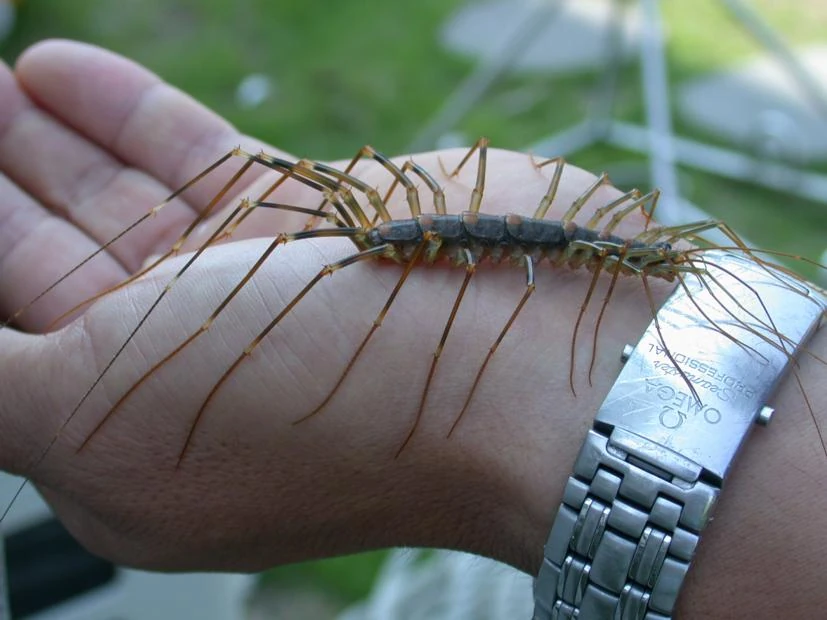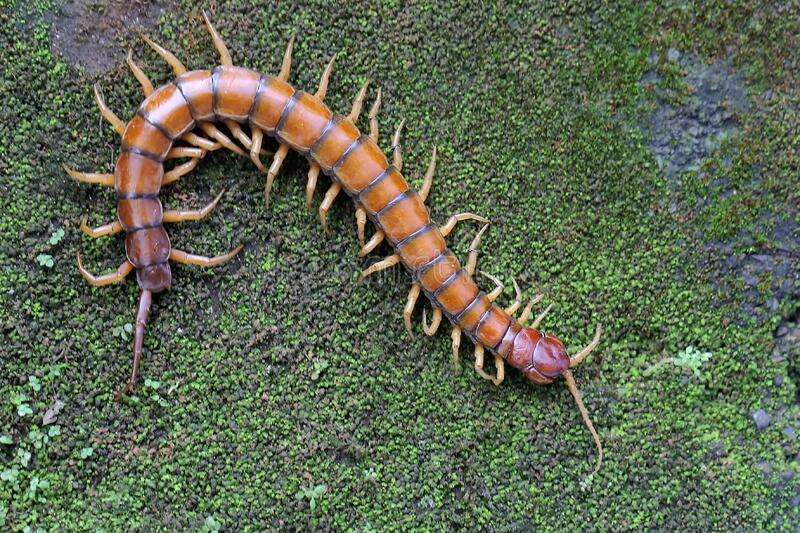
The Scolopendra morsitans species of centipede belongs to the Scolopendridae family and is commonly known as the red-headed centipede. The type species for the genus Scolopendra is S. morsitans.
Bright red heads and striated body segments are the main characteristics of adult Tanzanian blue ringlegs, which reach a maximum length of 13 centimeters. However, there are significant regional variations in coloration. The species is extremely invasive and can be found on all continents with human habitation. The species favors warm conditions and is frequently discovered on the ground under leaves, bark, and other substrate.
Description
In Southeast Asia
Length
However, in other areas, such as Southeast Asia, Tanzanian blue ringlegs rarely exceed 100 mm in length. Australian populations have been seen to reach lengths of up to 127 mm.
Adult color of head and body
Adults, on the other hand, typically have a bright red head and a brownish body with clear striations between each body segment.
Juveniles
Juveniles usually have heads that are the same color as their body trunks and lack distinguishing stripes. Occasionally, in field observations, the species can be distinguished from other Scolopendras by its rather thick back legs (known as ultimate legs).
Adult in North-Western Thailand
Head and leg colors
Adult Tanzanian blue ringleg centipedes in North-Western Thailand have bright red heads and final legs, whereas those in Cambodia and Northeast Thailand have dark blackish heads and final legs. Both Australia and Africa have seen similar color variations.
Antenna, segments and hairs
The antennae of a centipede usually have 18–20 segments (rarely, 17–23). 5-7 segments closest to the head have hairs facing dorsally, while the remaining 5-8 segments have hairs facing ventrally.
Teeth
They have five to six teeth per tooth plate. While body segments 7 through 20 of the centipede have visible lines (known as paramedian sutures) surrounding the center of the trunk, the final segment of the centipede has a central line known as a medial suture.

Distribution
The Tanzanian blue ringleg has a widespread range and may be found on all major continents, however it is less well known in Europe. Many parts of the Americas have been exposed to the centipede, and it has been spotted outside of its natural habitat in places including Mexico, Peru, Argentina, the Bahamas, and the Southern United States of America. It has been suggested that the extensive invasion of inhabited regions by red-headed centipedes is the result of their fondness for habitats that resemble the circumstances on ships.
The species inhabits a wide variety of habitats, including the semi-arid and arid outbacks of Australia, India’s various tropics and temperate zones, and Southeast Asia’s tropical rainforests. The range of the centipede appears to be constrained by the Tanzanian blue ringlegs’ inclination for warmer climes. Additionally, the centipede’s range and habitat selection are constrained by its need for enough air humidity to live.
Lifespan
This includes specific information about the species’ lifespan or length to maturity. S. morsitans is said to live for about 4 years in captivity.
Diet
They consume huge arachnids, including mice, bats, toads, scorpions, and small snakes.
Behavior
Together with other centipedes in the genus Scolopendra, Tanzanian blue ringlegs are noted for lifting their rear legs in a combative manner when approached from behind. This behaviour is believed to be an instance of automimicry, when the animal confuses potential predators by disguising its weak flanks as its fang-bearing head.
Table





